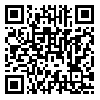BibTeX | RIS | EndNote | Medlars | ProCite | Reference Manager | RefWorks
Send citation to:
URL: http://bcn.iums.ac.ir/article-1-828-en.html

 , Tannaz Ahadi1
, Tannaz Ahadi1 
 , Maryam Nazari1
, Maryam Nazari1 
 , Simin Sajadi1
, Simin Sajadi1 
 , Lydia Abdul Latif2
, Lydia Abdul Latif2 
 , Seyed Majid Akhavan Hejazi2
, Seyed Majid Akhavan Hejazi2 
 , Gholamreza Raissi *1
, Gholamreza Raissi *1 

2- Department of Rehabilitation Medicine, Faculty of Medicine, University of Malaya, Kuala Lumpur, Malaysia.
Introduction: Balance impairment is a common problem and a major cause of motor disability after stroke. Therefore, this study aimed to investigate whether low-frequency repetitive Transcranial Magnetic Stimulation (rTMS) improves the postural balance problems in stroke patients.
Methods: This randomized double blind clinical trial with 12 weeks follow-up was conducted on stroke patients. Treatment was carried with 1 Hz rTMS in contralateral brain hemisphere over the primary motor area for 20 minutes (1200 pulses) for 5 consecutive days. Static postural stability, Medical Research Council (MRC), Berg Balance Scale (BBS), and Fugl-Meyer assessments were evaluated immediately, 3 weeks and 12 weeks after intervention.
Results: A total of 26 patients were enrolled (age range=53 to 79 years; 61.5% were male) in this study. Administering rTMS produced a significant recovery based on BBS (df=86, 7; F=7.4; P=0.01), Fugl-Meyer Scale (df=86, 7; F=8.7; P<0.001), MRC score (df=87, 7; F=2.9; P=0.01), and static postural stability (df=87, 7; F=9.8; P<0.001) during the 12 weeks follow-up.
Conclusion: According to the findings, rTMS as an adjuvant therapy may improve the static postural stability, falling risk, coordination, motor recovery, and muscle strength in patients with stroke.
Received: 2016/09/17 | Accepted: 2016/12/18 | Published: 2017/09/19
| Rights and permissions | |
 |
This work is licensed under a Creative Commons Attribution-NonCommercial 4.0 International License. |





